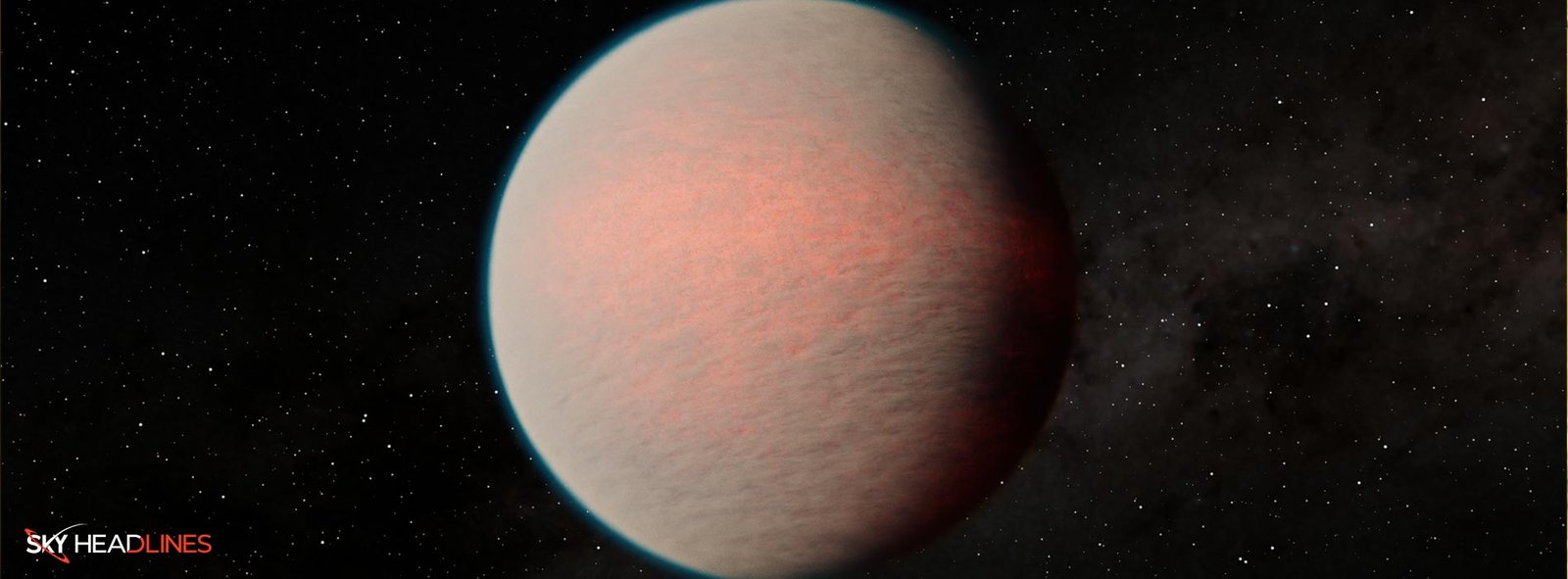NASA’s Webb telescope has captured the most detailed images yet of a mysterious planet!
NASA’s James Webb Space Telescope has discovered a mysterious planet far away from our solar system. This planet is different from any other planet we know because it reflects a lot of light and has a hot and humid atmosphere. This is the best view we have of a mysterious world known as a “mini-Neptune”. Previous observations couldn’t reveal much about it.
Does planet GJ 1214 b contain water?
The planet GJ 1214 b is too hot to have liquid water oceans, but it could still have water in the form of vapor in its atmosphere.
Eliza Kempton:
Eliza Kempton, a researcher at the University of Maryland, stated that the planet is covered by a layer of haze or clouds. This information was published in a new paper in the journal Nature. We were unaware of the atmosphere until we made this observation. She said that the mysterious planet might have been a “water world” if it had a lot of water and ice when it was formed.
What have researchers observed so far about the planer?
The research team tried a new approach to break through the thick barrier. They not only observed the host star’s light that passed through the planet’s atmosphere but also followed GJ 1214 b for almost its entire orbit around the star.
JWST’s powerful MIRI:
This discovery shows how powerful Webb’s Mid-Infrared Instrument (MIRI) is. It can see light wavelengths that are not visible to the human eye. The research team used MIRI to make a “heat map” of the planet while it was orbiting the star. The heat map showed us the planet’s day and night sides and gave us information about what its atmosphere is made of. This happened right before the mysterious planet went behind the star and then came out on the other side.
Eliza Kempton:
Kempton said that being able to complete a full orbit was very important to comprehend how the planet spreads heat from the sunny side to the dark side. Day and night are very different from each other. The night side is colder than the day side.” The temperatures changed from 535 to 326 degrees Fahrenheit (279 to 165 degrees Celsius).
What is the significance of a heavy molecule atmosphere on a planet like GJ 1214 b?
Such a big shift is only possible in an atmosphere made up of heavier molecules, such as water or methane, which appear similar when observed by MIRI. According to Kempton, the atmosphere of GJ 1214 b is not made up mostly of lighter hydrogen molecules. This clue could be important in understanding the planet’s history and how it was formed, including the possibility of it having a watery beginning.
She said that this atmosphere is not from the beginning of time. “It does not reflect the composition of the host star it formed around. Instead, it either lost a lot of hydrogen, if it started with a hydrogen-rich atmosphere, or it was formed from heavier elements, to begin with – more icy, water-rich material.”
Cooler Than Expected:
And while the planet is hot by human standards, it is much cooler than expected, Kempton noted. The mysterious planet has a shiny atmosphere that surprised researchers. It reflects a lot of light from its parent star instead of absorbing it and getting hotter.
What are Mini-Neptunes or sub-Neptunes?
New observations may help us learn more about a type of mysterious planet that we don’t know much about yet. Mini-Neptunes – or sub-Neptunes as they’re called in the paper – are the most common type of planet in the galaxy, but mysterious to us because they don’t occur in our solar system. The measurements taken indicate that the planet is quite similar to a smaller version of Neptune. Beyond that, little is known.
Rob Zellem:
“For the last almost decade, the only thing we really knew about this mysterious planet was that the atmosphere was cloudy or hazy,” said Rob Zellem, an exoplanet researcher who works with co-author and fellow exoplanet researcher Tiffany Kataria at NASA’s Jet Propulsion Laboratory in Southern California. “This paper has really cool implications for additional detailed climate interpretations – to look at the detailed physics happening inside this planet’s atmosphere.”
What is a red dwarf and how long it takes to complete its orbit?
The new work suggests the planet might have formed farther from its star, a type known as a red dwarf, then spiraled gradually inward to its present, close orbit. The planet’s year – one orbit around the star – takes only 1.6 Earth days.
Kempton explained that if a planet has a lot of water, it probably formed further away from its star.
How can studying mini-Neptunes help us understand the formation of planets in general?
We need more information to learn about GJ 1214 b and how other mini-Neptune mysterious planets formed. This planet might have a lot of water in its atmosphere, but it could also have a lot of methane. To better understand how mini-Neptunes are formed, we need to observe more of them closely.
“By observing a whole population of objects like this, hopefully, we can build up a consistent story,” Kempton said.





